Tales of Future Past v2
Main menu
- Home Page
-
Life on Other Worlds
- Life on Other Worlds
- Life on the Planets
- Life on the Moons
- Tales of the Stars
-
Future Living
- Future Living
- Life in 2000 AD
- Leisure
- Shopping
- Drive-In Market
- Cosmetics
- Laundry
- Strikerette
- School: 1999
- Optionics
- Life in 2055
- Future Movies
- Sensorama
- Scopitone
- Radio Pirates
- Weather Control
- Automatic Lumberjack
- Cold Light
- Eternal Youth
- Cryonics
- Suspended Animation
- Space Funeral
- Space Holidays
- Trapped by Television
- Robot Dogs
- Churchill: 1982
- Future House
- Future Kitchen
- Future Food
- Future Work
-
Future City
- Future City
- Skyscraper World
- Tomorrow's Skyline
- Urban Utopias
- World's Fair City
-
Future Transport
- Future Transport
- Rollerball
- Hydrofoil
- Tourism
- Future Liner
- Monorail
- Garden Rail
- Propeller Rail
- Water Rail
- Rocket Trains
- Radio Trains
- Rocket Mail
- Jet Boat
- Desert Liner
- Huge Truck
- Channel Tunnel
- Iron Whale
- Sea Slug
- Sea Slug 2
- Hovercraft
- Ice Field
- Rocket Port
- Vacuum Trains
- Transatlantic Tunnel
- Future Lift
- Travel: 1928
- Concrete Liner
- Teleportation
- Future Car
- Death Rays
Death Ray Potpourri
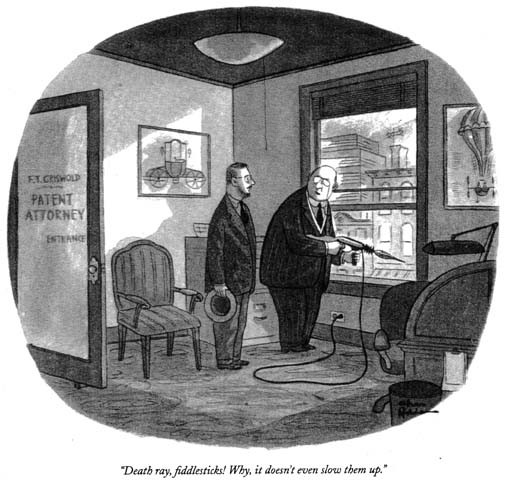
But we shouldn't let the glamour of the more successful (?) death-

This unnamed German had a novel design for a death-
According to reports, the gun was "capable of stunning men and animals at a one mile range," though this generally involved the inventor firing the gun from a catapult.
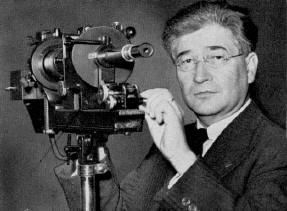
Dr. Antonio Longoria of Cleveland, Ohio was a rarity in the mad scientists stakes. After presenting his claim for perfecting his death ray, most notably for killing pigeons at a range of four miles, he dutifully destroyed his infernal machine for the good of humanity.
Now if only George Lucas would do the same with the Star Wars prequels.
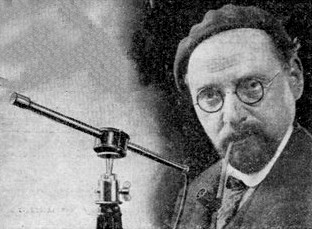
Over in France, Henri Claudel unveiled his death ray that he called his "ray of death," which makes all the difference, I suppose.
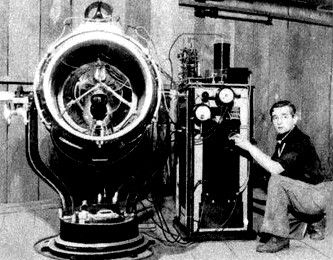
And then there's Mr. Henry Fleur of the United States, who was sued by his backers and demonstrated to a San Francisco court that his machine could kill termites, a lizard and a snake, but since it took up to eight and a half minutes to work it was less than the awe-
The jury found for Mr. Fleur after one of the earliest examples of the Chewbacca Defence on record.

Another British entry going for the Grindell Matthews award is "Professor" Harry May, who in 1936 unveiled his death ray that would outlaw war. Apparently, it shot outlawing beams at anyone who mobilised without a permit.
If "Professor" May looks familiar, that's because he's the same "Professor May" who tried to revolutionise the world in 1932 with his previous invention, Alpha the robot.
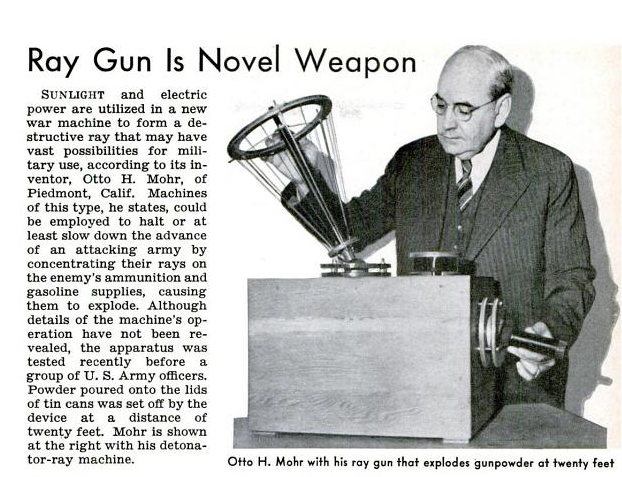
From Concord, California, we have Mr. Otto H Mohr with his solar-
And to think he started out on solar-
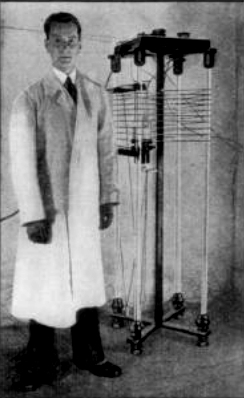
Then we present Herr Kurt Schimkus of Berlin, who exploded sea mines from two hundred yards away with his rather modest looking instrument of horror.
You can tell that young Herr Shimkus is a serious contender because he's the only mad scientist here to show up in the regulation lab coat.
And finally, we have the true Death Ray.